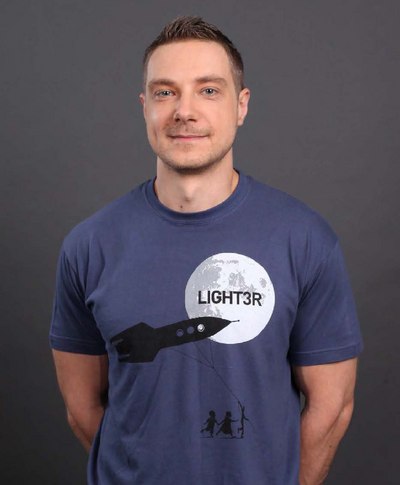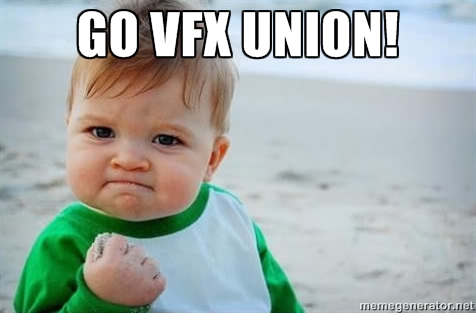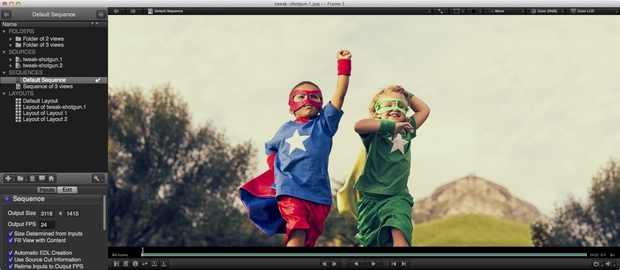Views : 1,124





3Dprinting (176) A.I. (761) animation (340) blender (197) colour (229) commercials (49) composition (152) cool (360) design (636) Featured (69) hardware (308) IOS (109) jokes (134) lighting (282) modeling (131) music (186) photogrammetry (178) photography (751) production (1254) python (87) quotes (491) reference (310) software (1336) trailers (297) ves (538) VR (219)
Category: ves
-
Disney, Fox and Paramount could lose the rights to their CGI characters
http://www.digitalspy.com/movies/news/a841451/disney-cgi-characters-court-case-mova/
Marvel Studios and Lucasfilm owners Disney – as well as 20th Century Fox and Paramount – are caught up in a lawsuit over MOVA, software that captures actors’ facial expression to create realistic CGI models.
Rearden LLC, which claims to own the rights to MOVA, has been suing a Chinese company for stealing the technology, which was then used by the studios in their films, says The Hollywood Reporter. The plaintiff is now suing for the rights to characters created with the tech.
-
(2017) Digital Domain Holdings Reports $64 Million in Losses
http://variety.com/2017/biz/asia/losses-at-digital-domain-holdings-double-1202020056/
Digital Domain Holdings, the Hong Kong-based visual effects and virtual reality group, saw losses in 2016 more than double to $64.3 million.
The core Digital Domain 3.0 business provided VFX for films including “Beauty and the Beast,” “Deadpool” and “X-Men: Apocalypse” during the year.
Revenues across the group increased 45% from $68 million (HK$527 million) in 2015 to $98.5 million (HK$763 million) last year. Net losses, which totaled $23.1 million (HK$179 million) in 2015, reached $64.3 million (HK$498 million) in 2016.
The company pointed to content development and research and development costs for virtual reality content and games, 360° and virtual humans, and a more than fourfold increase in amortization of intangible assets, as causes of the financial pain.
-
3D TV is officially dead
http://www.businessinsider.com.au/3d-tv-is-dead-2017-1?r=US&IR=T
1- Not enough content. DirecTV and ESPN stopped broadcasting their 3D channels in 2012 and 2013.
2- The glasses needed for 3D were clunky and annoying, and they made people feel self-conscious while wearing them.
3- 3D TVs were and are perfectly good 2D TVs, so 3D features weren’t often used.
4- 3D movies were closely associated with Blu-ray Discs as movie streaming started to gain traction.
5- 3D TVs need careful calibration and can cause eye strain.
6- Maybe it was always a gimmick. Ask yourself: Have 3D effects ever really impressed you or affected your viewing experience?
-
Chaos Group V-Ray Wins Academy Award
http://www.awn.com/news/chaos-group-s-v-ray-wins-academy-award
Photorealistic production renderer used on more than 150 feature films since 2002, including recent hits like ‘Doctor Strange,’ ‘Deadpool,’ and ‘Captain America: Civil War,’ to be honored for advancing the use of fully ray-traced rendering in motion pictures.
-
Sony Joins Blue Sky in Settlement of Hollywood Studio Antitrust Lawsuit
http://www.awn.com/news/sony-joins-blue-sky-settlement-hollywood-studio-antitrust-lawsuit
Sony has become the second Hollywood studio to reach a settlement in a class-action lawsuit alleging that it and other studios violated antitrust laws by conspiring to suppress the wages of animation and VFX artists via non-poaching agreements…
…in 2011, a class-action lawsuit was brought against Pixar, Lucasfilm, Apple, Google, Adobe and Intuit. The first two companies settled claims for $9 million while the other companies have gone to an appeals court after Koh rejected a $325 million settlement as insufficient.
-
Blue Sky Reaches Settlement in Hollywood Studio Antitrust Lawsuit
http://www.awn.com/news/blue-sky-reaches-settlement-hollywood-studio-antitrust-lawsuit
Blue Sky Studios has reached a settlement in a class-action lawsuit, Variety reports, alleging that the animation studio behind last year’s The Peanuts Movie and the Ice Age franchise and other companies violated antitrust laws by conspiring to suppress the wages of animation and VFX artists via non-poaching agreements.
The suit contends that the roots of the anti-poaching agreements go back to the mid-1980s, when George Lucas and Ed Catmull, the president of Steve Jobs’ then-newly formed company Pixar, agreed to not raid each other’s employees. Other companies later joined conspiracy, the suit alleges, including Sony ImageMovers, Lucasfilm and Walt Disney.
The plaintiffs have been seeking class certification. Their proposed settlement class includes certain animation and visual effects employees who worked at Pixar from 2001 to 2010; Lucasfilm from 2001 to 2010; DreamWorks Animation from 2003 to 2010; the Walt Disney Co. from 2004 to 2010; Sony Pictures Animation and Sony Pictures Imageworks from 2004 to 2010; Blue Sky from 2005 to 2010; and ImageMovers from 2007 to 2010.
COLLECTIONS
| Featured AI
| Design And Composition
| Explore posts
POPULAR SEARCHES
unreal | pipeline | virtual production | free | learn | photoshop | 360 | macro | google | nvidia | resolution | open source | hdri | real-time | photography basics | nuke
FEATURED POSTS
-
Free fonts
-
Guide to Prompt Engineering
-
QR code logos
-
Photography basics: How Exposure Stops (Aperture, Shutter Speed, and ISO) Affect Your Photos – cheat sheet cards
-
PixelSham – Introduction to Python 2022
-
Photography basics: Production Rendering Resolution Charts
-
VFX pipeline – Render Wall management topics
-
NVidia – High-Fidelity 3D Mesh Generation at Scale with Meshtron
Social Links
DISCLAIMER – Links and images on this website may be protected by the respective owners’ copyright. All data submitted by users through this site shall be treated as freely available to share.














